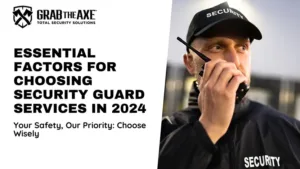The ability to spot dangerous individuals in various settings, from crowded places to unfamiliar environments, is a vital skill for everyone’s safety. This expanded article delves deeper into the essential methods and signs to identify potential threats, providing you with the knowledge to protect yourself and those around you. By recognizing certain indicators, you can significantly improve your ability to stay alert and safeguard against potential dangers.
Understanding Body Language to Spot Dangerous Individuals
Body language offers significant cues about a person’s intentions. Avoiding eye contact, invading personal space, and displaying aggressive gestures like clenching fists or pointing fingers can indicate malicious intentions. It’s crucial to remain vigilant and attentive to these unusual signs, as they can be early warnings of potential danger.
Examining Appearance for Potential Threats
An individual’s appearance can be a tell-tale sign of their intentions. Attires that seem out of place or efforts to conceal identity, such as using hats, bandanas, or sunglasses, could signal a desire to hide one’s identity or intentions. Paying close attention to these details is essential in assessing whether someone poses a threat.
Observing Behavior for Signs of Danger
Behavior observation is key in identifying potential threats. Monitoring how individuals interact with others can offer valuable insights into their intentions. Behaviors that are overly aggressive or suspiciously quiet and withdrawn can indicate a person planning or posing a threat, allowing for preemptive actions to avoid or mitigate risks.
Assessing Attitude Toward Authority
A person’s attitude towards authority figures can reveal much about their intentions. Displays of aggression or disrespect towards authority should raise red flags and warrant closer observation or action. Such behaviors might indicate a disregard for societal norms and potential for malicious intent.
Listening to Verbal Cues
Verbal cues, including threats or expressions of revenge, are significant indicators of someone’s dangerous potential. Taking such statements seriously is crucial, as they can unveil a person’s harmful intentions. Acting promptly by removing oneself from potentially dangerous situations or reporting the incident is advisable.
Spot Dangerous Individuals: Practical Tips and Strategies
This section will provide practical tips and strategies to effectively spot dangerous individuals and maintain personal safety. From staying aware of your surroundings to understanding the nuances of body language, these strategies are designed to empower you and enhance your ability to act swiftly in potentially dangerous situations.
The Psychological Aspect of Dangerous Behaviors
Understanding the psychological motivations behind dangerous behaviors can provide deeper insights into spotting potential threats. This section explores the mindset of individuals who pose dangers to others and how recognizing these psychological patterns can aid in identifying threats before they escalate.
Technology and Tools to Assist in Identifying Threats
With advancements in technology, there are now tools and applications designed to assist in identifying potential threats. This section will discuss how modern technology can be leveraged to spot dangerous individuals effectively and the types of tools available for personal and community safety.
Creating a Safe Environment: Prevention and Awareness
Preventing dangerous situations is key to maintaining a safe environment. This section will outline strategies for preventing potentially dangerous situations from arising and emphasize the importance of community awareness and cooperation in identifying and mitigating threats.
Lessons Learned from Past Incidents
Analyzing past incidents where dangerous individuals were successfully identified can offer valuable lessons and strategies for prevention. This section will examine real-life cases, highlighting the key takeaways and measures that can be implemented to avoid similar situations in the future.
Identifying dangerous individuals is a critical skill that enhances personal and community safety. By paying attention to body language, appearance, behavior, attitudes toward authority, and verbal cues, you can navigate public spaces more safely and protect yourself and others from potential threats. Stay informed and proactive about your safety to create a safer environment for everyone.
At Grab The Axe, we dedicate ourselves to providing individuals and organizations with the tools and knowledge necessary for a robust security posture. For a comprehensive security analysis or more information on safeguarding personal safety, consider scheduling an assessment with us. Stay informed and proactive about your safety by subscribing to Grab The Axe Insights and following our social media platforms.
References:
Nemko, M. (2014, October 26). Dangerous Personalities. Psychology Today. https://www.psychologytoday.com/us/blog/how-do-life/201410/dangerous-personalities
Navarro, J. (2014, October 26). Dangerous Personalities. Psychology Today. Retrieved from https://www.psychologytoday.com/us/blog/how-do-life/201410/dangerous-personalities
Federal Bureau of Investigation. (n.d.). Workplace Violence Prevention: Readiness and Response. Law Enforcement Bulletin. Retrieved from https://leb.fbi.gov
Spot Dangerous Individuals – To Learn More:
Empower Your Defense: The Essential Guide to Martial Arts Mastery
Empower Yourself: Mastering Essential Self-Defense Skills for Ultimate Protection





Pingback: 5 Revolutionary Strategies to Balance Workplace Security Psychology and Employee Well-being